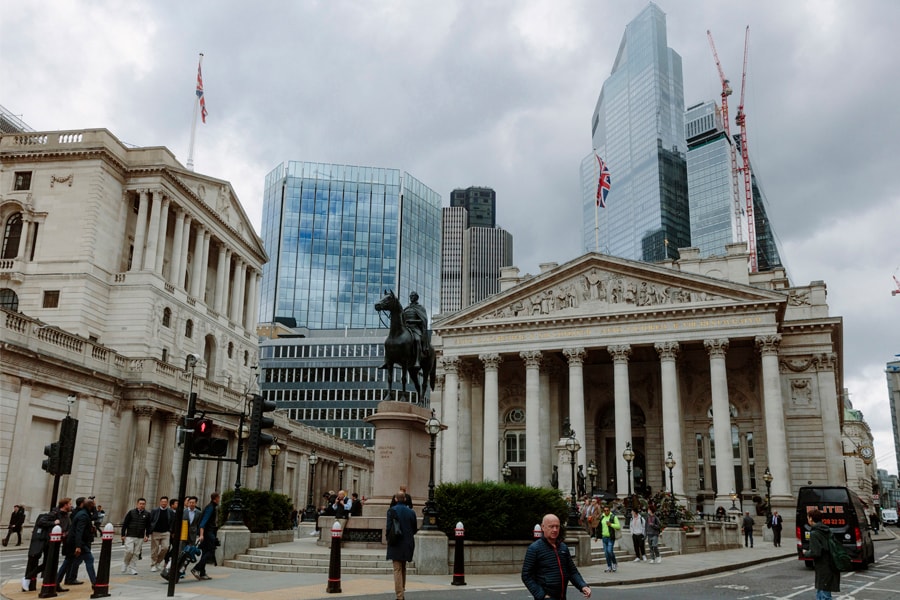
What's happening to UK's economy and how Bank of England is trying to manage it
Plans by Liz Truss, Britain's new prime minister, to cut taxes and freeze energy bills landed like a bomb in a niche corner of financial markets, hitting U.K government bond prices so hard that the Bank of England was compelled to intervene
 The Royal Exchange, a center of commerce, in London, Sept. 28, 2022. Plans by Britain’s Prime Minister Liz Truss to cut taxes and freeze energy bills caused upheavals among complex financial instruments that pension funds use to minimize the impact of interest rate changes, leading to a bond market rout that prompted the Bank of England to intervene. (Alex Ingram/The New York Times)
The Royal Exchange, a center of commerce, in London, Sept. 28, 2022. Plans by Britain’s Prime Minister Liz Truss to cut taxes and freeze energy bills caused upheavals among complex financial instruments that pension funds use to minimize the impact of interest rate changes, leading to a bond market rout that prompted the Bank of England to intervene. (Alex Ingram/The New York Times)
Plans by Liz Truss, Britain’s new prime minister, to cut taxes and freeze energy bills landed like a bomb in a niche corner of financial markets, hitting U.K government bond prices so hard that the Bank of England was compelled to intervene, and highlighting how obscure derivatives can still shake up the global financial system more than a decade after the 2008 financial crisis.
On Wednesday alone, 30-year British government bonds swung more in a day than they had in a full year for the past five years: the biggest one-day move on record. In currency markets, the pound slumped to its lowest level on record against the U.S. dollar, coming close to parity, with moves of a magnitude comparable to the onset of the coronavirus pandemic.
“It is the most extreme market event that I have been involved in,” said Simon Bentley, head of U.K. client portfolio management at asset manager Columbia Threadneedle, who started working in finance just before the dot-com bubble burst in 2000.
It all started last Friday, when Kwasi Kwarteng, the chancellor of the Exchequer, announced Britain’s biggest tax cuts since the 1970s, predominantly for high earners. The package also included a new cap on energy prices to help households facing a winter fuel crisis. Investors had been bracing for the moves, but the announcement was unexpectedly thin on details about how the government would finance its plan. Fears that the government would have to increase its borrowing pushed down the price on its existing debt, and sank the value of the pound.
Prices move inversely to bond yields. Within 30 minutes of the British government’s announcement, the yield on 30-year government bonds, also known as gilts, soared, moving more than it typically does in a full day. The market reaction ricocheted around the world. U.S. government bond yields also rose and stocks fell.
©2019 New York Times News Service







